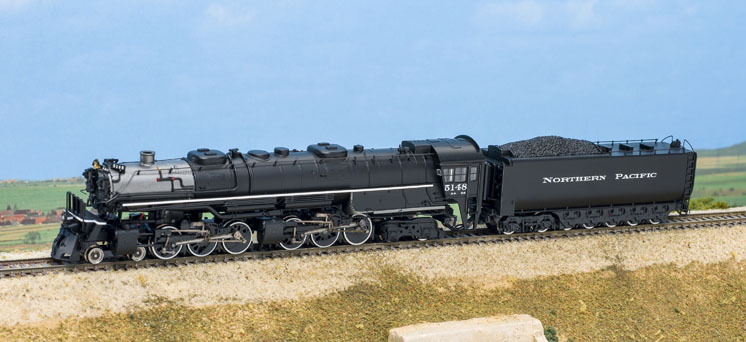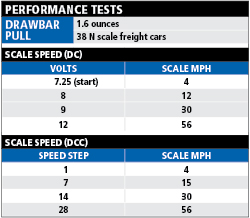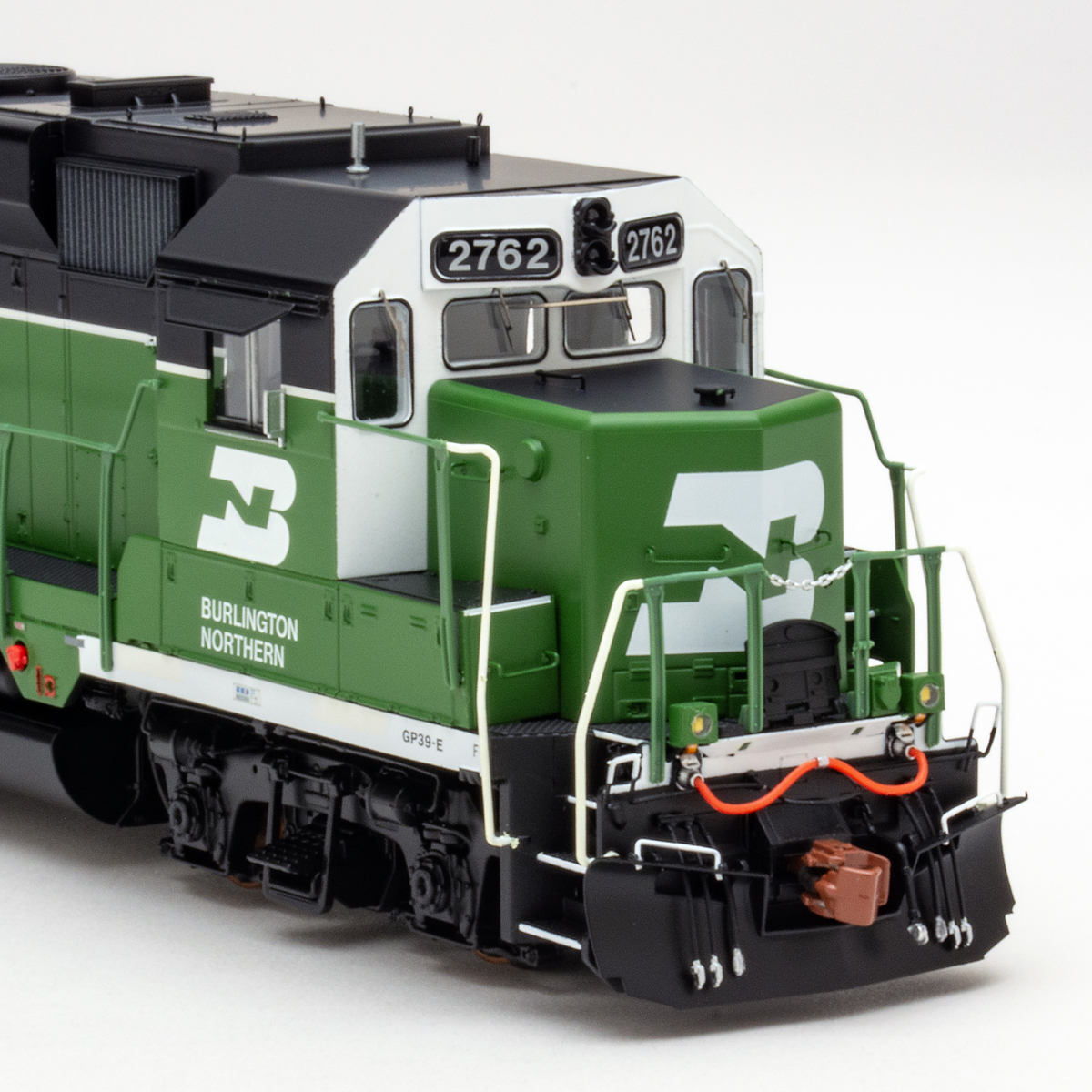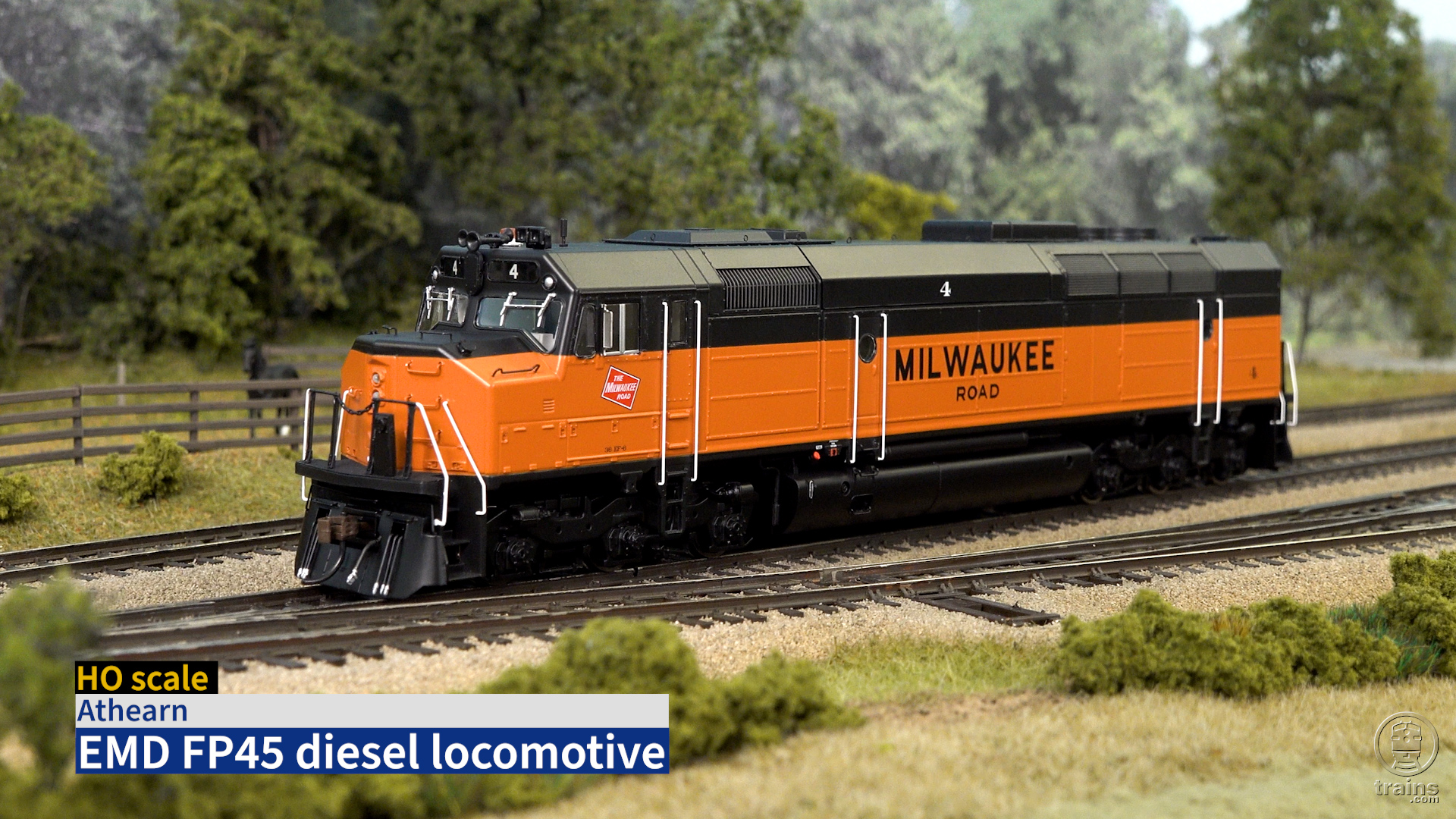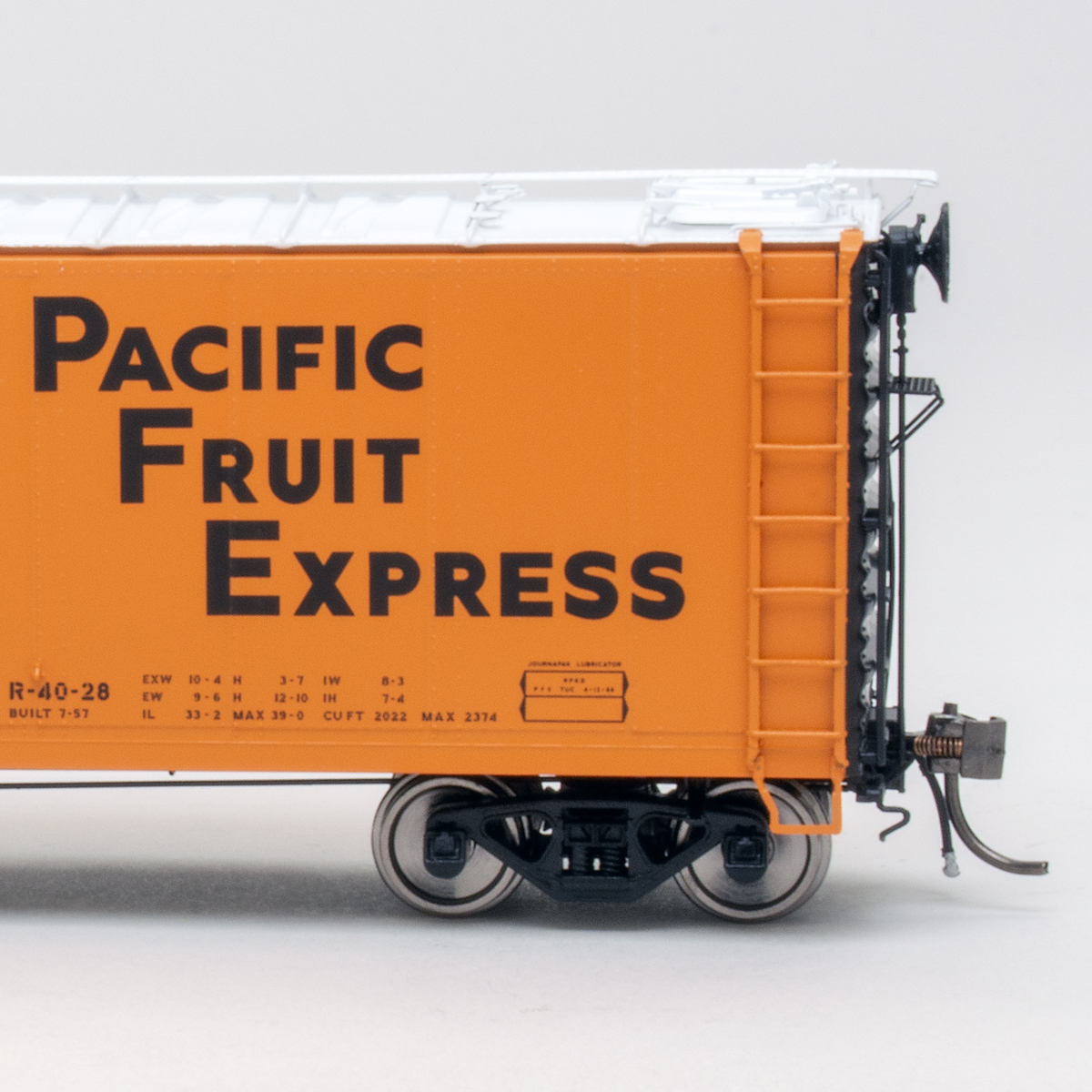Even in N scale the class Z-8 4-6-6-4 is an imposing steam locomotive. Like the Athearn Genesis HO Z-8 that I reviewed in the August 2017 Model Railroader, the accurately detailed N scale model is available with a factory installed SoundTraxx Tsunami dual-mode decoder. The model delivered smooth performance and realistic sounds on both Digital Command Control (DCC) and direct-current (DC) layout tests.
The prototype. Built by the American Locomotive Co. in 1943 and 1944, the 20 class Z-8 Challengers were the last steam locomotives purchased by the Northern Pacific Ry. These locomotives were nearly identical to the class Z-7 Challengers delivered to the NP in 1941. Both the Z-7 and Z-8 class locomotives were heavier and more powerful than the NP’s first Alco-built Challengers, the Z-6 class, delivered in 1936 and 1937.
Two additional class Z-8 locomotives were added to the NP’s 1944 order. While most of the NP Challengers burned coal, these locomotives were built to burn oil for service on the Spokane, Portland & Seattle Ry.
Unlike compound articulated Mallets, the Challengers were simple-expansion locomotives with two sets of high pressure cylinders. The class Z-8 Challengers had a starting tractive effort of 107,000 pounds and were the most powerful 4-6-6-4s ever built.
During their careers, the class Z-8 Challengers sped freight as well as a passenger and troop trains along the NP main. All were retired by 1957.
The model. Most of the N scale model’s dimensions, including the correct 70″ driver diameter, match prototype drawings of a class Z-8 Challenger published in the May 1974 Model Railroader. The space between the locomotive cab and tender deck is about a scale foot wider than the prototype. This helps the N scale locomotive handle tight model railroad curves.
The plastic boiler and tender have well-defined molded detail, including piping and throttle linkage on the boiler. Separately applied plastic detail parts include air piping, handrails, and the dual air compressors mounted on the smokebox front.
There’s clear window glazing in the all-weather cab. The cab interior features a detailed boiler backhead.
The locomotive and tender are smoothly painted with a black satin finish. The smokebox and smokestack are correctly painted graphite. Some valve handles on the boiler and the ash pan dump wheel under the firebox are painted red. Lettering fonts match prototype photos.
The mechanism. Both the front and rear engines of the N scale articulated locomotive pivot, allowing the model to negotiate tight model railroad curves. On the prototype, the rear engine is fixed and only the front engine pivots.
The dual-flywheel equipped motor is mounted to a die-cast metal weight that’s enclosed by the two halves of the plastic boiler. Worm shafts connect the motor to the first axle of the front engine and the third axle of the rear engine. The drivers on those axles are also equipped with traction tires. The metal siderods transfer power from the geared axles to the non-geared axles.
An eight-wire harness connects the electronics in the locomotive and tender. The SoundTraxx Tsunami is housed inside the tender along with a well-enclosed round speaker. The tender backup light and the locomotive headlight are illuminated by light-emitting diodes (LEDs).
DCC operation. For DCC testing, I ran the N scale Z-8 with a Digitrax Zephyr Extra system that delivered 14.7V to the track. The Challenger easily negotiated no. 6 turnouts and crossovers, including slow backing moves through a yard. Although it can handle an 11″ radius curve, the model looks much more realistic rounding 15″ or wider radius curves.
Out of the box, the model accelerated smoothly set to 28 steps in DCC, as shown in the chart above. The model’s top speed of 56 mph is close to that of the prototype, which was designed to haul tonnage on the NP’s undulating main line at speeds of up to 60 mph.
The model’s performance can be further fine-tuned using configuration variables (CVs), including programming custom speed tables or choosing one of the 16 preset speed curves. By programming CVs 3 and 4, I added acceleration and deceleration momentum to better simulate the gradual stops and starts of a massive locomotive. A list of all the supported decoder CVs is included in a printed quick start guide, and a more extensive user manual is available at www.soundtraxx.com.
I also easily programmed the locomotive address to match its cab number and changed the directional head- and backup light to manual control. By programming CV61 I set up the Tsunami train brake feature, which let me use a function button (F9) to stop or start the train regardless of the throttle setting.
Other user-triggered functions include a coupler crash, bell, and long and short whistle blasts. When I turned on the headlight, I also heard the whine of the dynamo. The effect was a bit loud for my taste, but the volume levels of all the sounds can be adjusted with CVs.
When underway, the exhaust was synchronized to the correct four chuffs per wheel revolution with the sound of one engine occasionally going out of synch with the other just like on a real simple articulated.
DC operation. On our DC test track, the model’s sounds and lights came on at 6V, and the model crept along at 4 scale mph when I set the throttle to 7.25V. As I advanced the throttle, the Challenger accelerated smoothly to 56 scale mph at 12V.
When operated with a DC power pack, the sounds are limited to the exhaust chuffs, squealing brakes when the throttle is decreased, and a grade-crossing whistle signal when the direction switch is quickly flipped. Operating the model with a Model Rectifier Corp. Tech 6 analog sound controller allows access to other user-triggered functions as well as some programming capability.
With its realistic sound system and a detail level that rivals its larger HO scale cousin, the N scale Z-8 is a worthy model of its Northern Pacific “supersteam” prototype.
Manufacturer
Athearn Trains
1600 Forbes Way, Suite 120
Long Beach, CA 90810
www.athearn.com
Era: 1943 to 1957
Road name: Northern Pacific; Spokane, Portland & Seattle
Features
Electrical pickup on eight drivers (12 with traction tires removed) and all tender wheels
Five-pole skew-wound motor with dual brass flywheels
McHenry operating knuckle coupler on rear of tender (at correct height)
Metal wheels in gauge
Minimum radius: 11″ (15″ recommended)
SoundTraxx Tsunami decoder (DCC version)
Weight: 6.3 ounces (Engine alone weighs 4.3 ounces)





